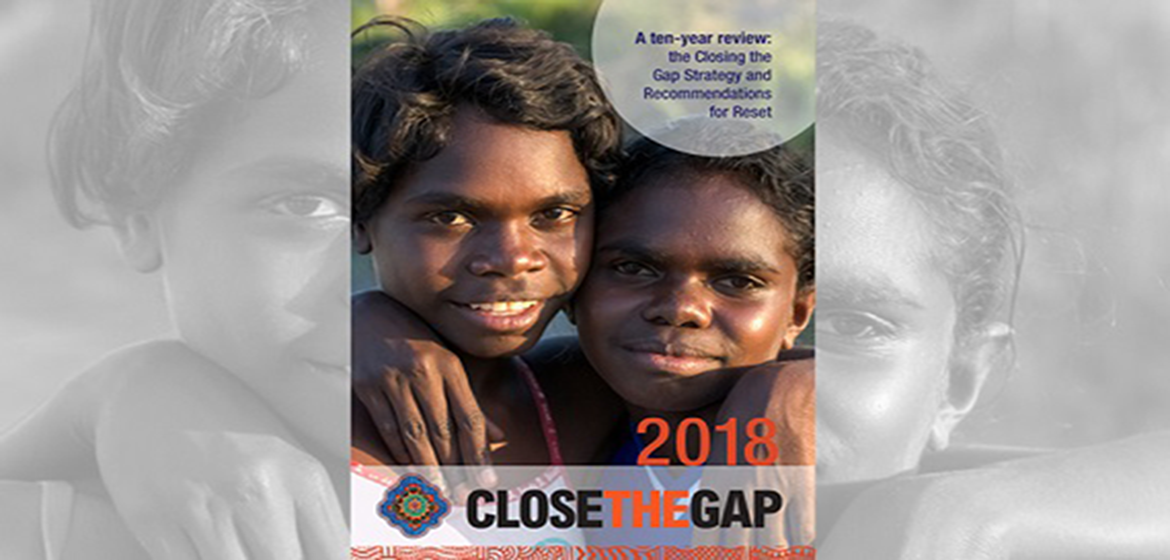by June Oscar & Rod Little
As the life expectancy gap between Indigenous and non-indigenous Australians shows signs of widening, urgent action is needed to address our national shame say the co-chairs of the Close The Gap Campaign.
A decade ago, hopes were high of a new beginning when Australian governments united in a landmark statement that vowed to close the gap in life expectancy and health inequality faced by our nation’s First Peoples.
Today, the damning reality is Australia is staring down the barrel of successive government failures that could deny our people, children and grandchildren a better future.
The was signed by then Prime Minister Kevin Rudd and Opposition Leader Brendan Nelson in 2008. The statement, which came shortly after the national apology to the Stolen Generations, was to be the start of a true partnership to bring about real and sustained change.
The subsequent , launched in 2009, was to be the vehicle that would deliver that change.
In fact, the life expectancy gap has again started to widen. This is a national shame and an international embarrassment. For too many Aboriginal and Torres Strait Islander People, this is a dire reality of shortened lives and ongoing health inequality.
Last year, Prime Minster Malcolm Turnbull reported that six out of the seven Closing the Gap targets were ‘not on track’. Sadly, we’re expecting to see a similar report card when he delivers his Closing the Gap address to Parliament next week.
The Close the Gap Campaign review
In a departure from our usual report, this year into what has happened in the decade since the signing of the Close the Gap Statement of Intent.
As COAG seeks to ‘refresh’ the Closing the Gap Strategy¸ the campaign has identified some key reasons why there have been few – if any – significant improvements.
Firstly, and crucially, the strategy has only partially, and disjointedly been implemented. There have been too many policy changes, retreats and inconsistencies.
Secondly, although the strategy was initially a 20-plus year program, it was effectively abandoned after five years.
The revolving door of prime ministers and Indigenous affairs ministers over the years and cuts of more than $500m to Indigenous affairs in the 2014 Federal Budget, have all had a devastating impact.
The health and wellbeing of our people is not, and never should be, framed as an intractable problem. Political intransigence and lack of will is by far the greater problem.
Our people and our organisations have provided reviews and recommendations. The Redfern Statement, for one, is such a framework developed by our people; one that has yet to be fully adopted.
The Closing the Gap refresh
It is clear from our analysis that the Close the Gap Strategy must be reconstructed from its foundation, based on the building blocks of a nationally coordinated approach, through national leadership and through outcome-orientated funding agreements.
We believe this is the last chance to get the strategy right in order to achieve the goal of health equality by 2030. Policy paralysis is not an option.
The Close the Gap Campaign is led by more than 40 Aboriginal and Torres Strait Islander and non-Indigenous health and human rights bodies. No other group can boast this level of leadership, experience and expertise.
We have the solutions.
Time for urgent action
It’s time for each state and territory government to affirm or reaffirm their commitment to the Close the Gap Statement of Intent and the improvement of health and wellbeing of Aboriginal and Torres Strait Islander people within their jurisdictions.
We want to see Premiers, Chief Ministers, Health and Indigenous Affairs ministers in every jurisdiction providing regular, public accountability on their efforts to address the inequalities we see in our communities.
No more finger pointing between governments. We are demanding a new level of political resolve from all parliamentarians, at all levels of government.
A reset Closing the Gap Strategy should clearly articulate targets for both levels of government and be underpinned by a new set of agreements that include Aboriginal and Torres Strait Islander peoples, their leaders and organisations.
Addressing funding myths and the way ahead
Finally, it is time to address the funding myths that continue to plague Aboriginal and Torres Strait Islander affairs. These myths detrimentally distort public support for bold solutions.
Aboriginal and Torres Strait Islander people, on average, have 2.3 times the burden of disease than fellow non-Indigenous Australians. However, there’s a major funding shortfall.
In the 2017 Closing the Gap Report, the Prime Minister announced the Productivity Commission would be expanded to include an Indigenous Commissioner ‘to lead on the Commission’s work of policy evaluation’.
One year later, there has been no substantial announcement about the appointment of an Indigenous Commissioner to the Productivity Commission. The Close the Gap Campaign expects the Federal Government to appoint the commissioner as a matter of urgency.
We hope that an Indigenous Productivity Commissioner can bring to light the true costs of our collective failure to close the gap
Two years ago now, the Prime Minister made a commitment to work with Aboriginal and Torres Strait Islander people, rather than do things to us and for us.
The Close the Gap Campaign and many other leaders and organisations have expressed concerns about the refresh process of engagement so far.
Engagement must be genuine and meaningful. Our engagement must never be met with a tick the box exercise to achieve forgone conclusions.
We have an opportunity through this strategy to ensure that the future lives our children and grandchildren are better.
Without a recommitment, the closing the gap targets will measure nothing but the collective failure of Australian governments to work together and to stay the course.
Source:
Related to SDG 3: Good health and well-being



